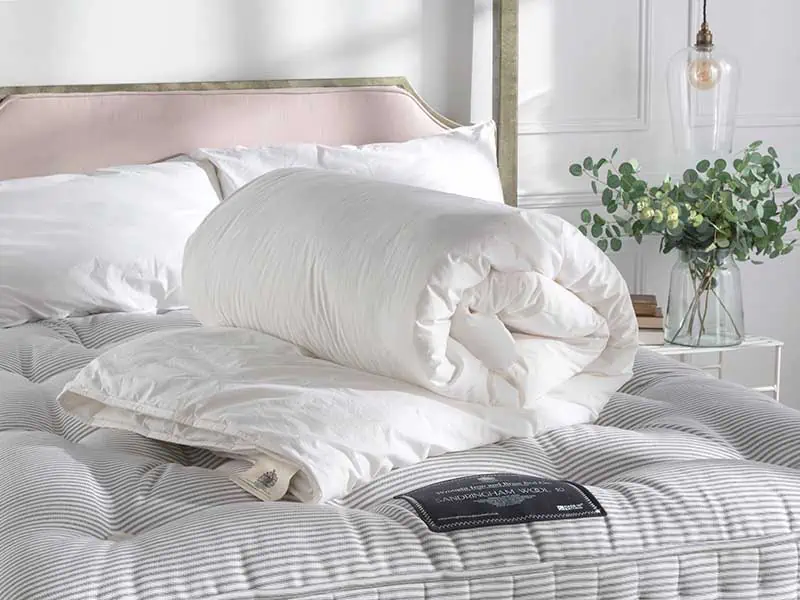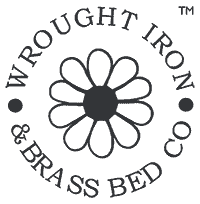
The Science Behind Comfort
Did you know that wool is a by-product of the sheep farming industry?
Not an end-of-life process as many consumers perceive, British sheep farmers believe that British wool is underrated and undervalued. To preserve the welfare of flocks, shearing takes place to keep sheep cool, particularly during the warmer months, and avoid parasitism. While most British fleeces contain a higher micron count than that of Merino sheep, their uses are still abundant, their properties still beneficial.
Why else would we use exclusively 100% British wool in our bedding and mattress collections?
What are Microns?
Wool fibres vary in colour, length, and diameter (quality). Fibres’ diameter (the width of an individual hair) and staple length determine the fleece’s value and, consequently, its uses.
A wool staple is a tuft of multiple wool fibres; its length and strength help decide the type of yarn and fineness of the wool. Equivalent to one thousandth of a millimetre, a micron is the measurement of a fibre’s diameter.
Possibly the most important feature of wool, the diameter of a fleece’s fibres is dependent on the age, breed, and health of a sheep. The lower the micron, the finer the wool quality. Although lambswool is generally finer than that of a hogg or ewe, its microns vary and is therefore not as fine as merino or cashmere.
Part of the Process
Once sheep have been sheared, farmers can send their wool to be graded by British Wool.
British Wool categorises each fleece based on its ‘style and characteristics’, including the staple length and micron count.
It’s then sent to auction, where it’s sold, often for as little as 50p per fleece. Anything ungraded is returned.
Based on the low market value of British wool, Wrought Iron and Brass Bed Co. endeavour to support local British farmers, champion the different opportunities to utilise British wool, and promote its benefits to educate consumers. The more possibilities of British wool there are, the higher the value will be placed on the fibre.
Microns, Wools and Uses
When consumers think of wool products, immediately we think of fine-wool clothing.
Fine wools, such as merino and cashmere, have a micron count between 18.6 and 20.5.
In comparison, the uses of medium wools (20.6 – 22.5 microns) and broad wools (anything above 22.6 microns) include furnishings, knitting yarns and even insulation.
Wools with a micron count below 18.5 are categorised as superfine, ultrafine, and extra fine.
However, medium and broad wools need not be ignored.
Sheep’s fleece is a renewable source of a natural fibre. One that is naturally flame-resistant and hypoallergenic. Wool’s breathability, odour control, and thermoregulation make it ideal for manufacture and design from fine-knit sportswear to mattresses. It’s a natural way to reduce the abundance of fossil fuel-based fibres.
British wool is typically 20 to 30 microns- hardwearing and suitable for carpets or insulation. Approximately 15 million sheep are farmed on the British Isles, with ewes yielding between 1 and 2 kilos of wool per year. That’s a lot of wasted wool.
Another use is housing insulation. Wool is effective soundproofing; it uses just 10% of the energy it takes to create foamboard. In gardening, wool suppresses weeds and maintains compost moisture. It can line hanging baskets and acts as material for birds to build nests each spring.
Our Sandringham Wool Collection
Wrought Iron and Brass Bed Co.’s Sandringham Wool Collection of mattresses and bedding incorporates 100% British wool from the Estate for a breathable and soothing sleep experience.
Sandringham’s Aberfield sheep are reared on organic pastures to uphold their welfare. Maintaining a natural environment and managing a stress-free climate encourages healthy fibres to grow (not unlike the revitalising experience of a good night’s sleep). Thanks to the medium micron count in the Aberfield flock’s fleece, the wool is thicker, stronger, and more durable. Its dense, hollow fibres spring back, ideal for preserving the comfort of your mattress each day.

Our duvets and mattress protectors are 100% carded Sandringham wool, which untangles the wool fibres and straightens them in one direction, trapping air for a natural bounce that maintains shape and, ultimately, comfort.
The collection’s mattresses combine 100% hand-teased Sandringham wool with natural fibres, such as organic cotton and cashmere, for a luxurious night’s sleep. As with our breathable bedding, the hand-teased wool provides aeration and each hand-laid layer of fleece creates air pockets for a firm, but sumptuous feel.
A medium micron count doesn’t have to limit the impact of British wool. Promoting the fibre’s uses and benefits will further its opportunities and increase its value.
Want to learn more about the uses of British wool?
Listen to episode 3 of our podcast Two in a Bed where we’re in conversation with British sheep farmer Gordon Robinson.
We discuss the experiences of our nation’s sheep farmers, the benefits of British, alternate uses for the natural fibre, and why sheep’s wool might be more sustainable than you think.


